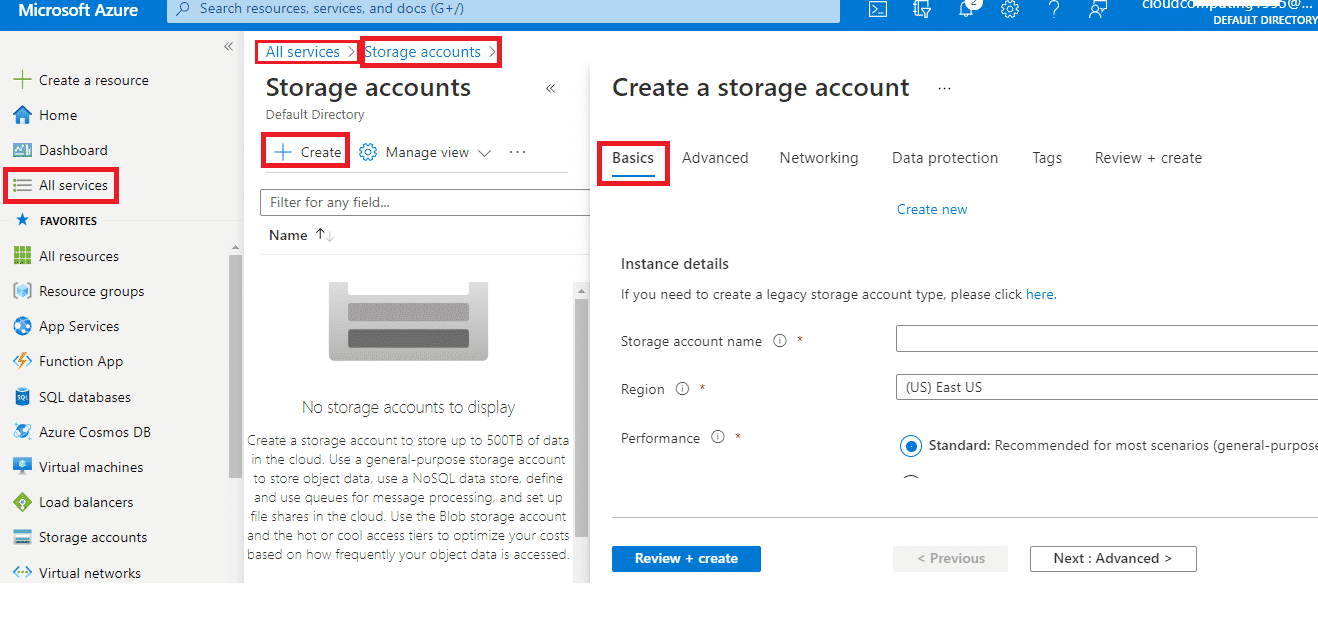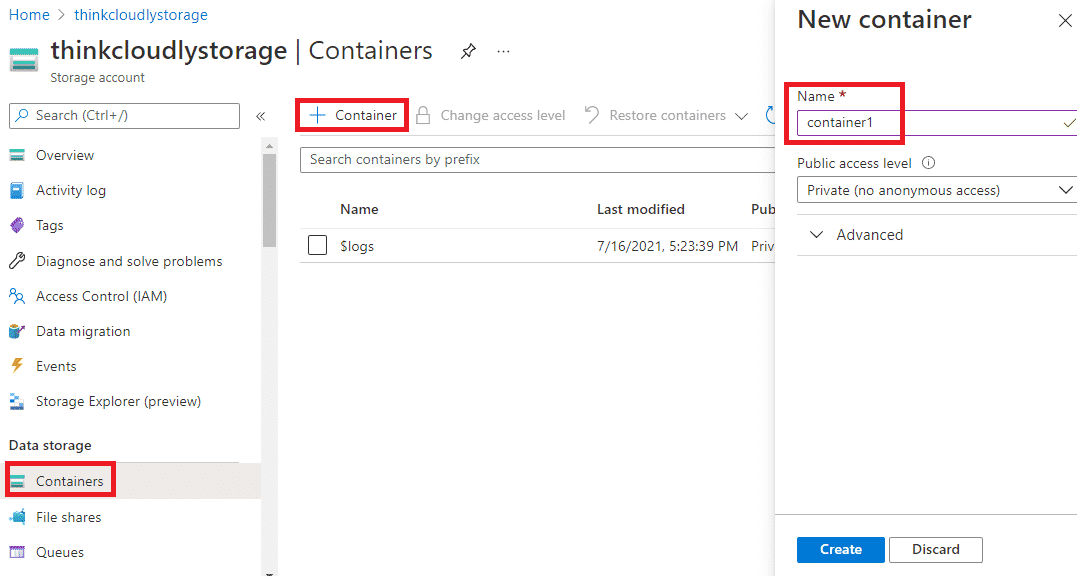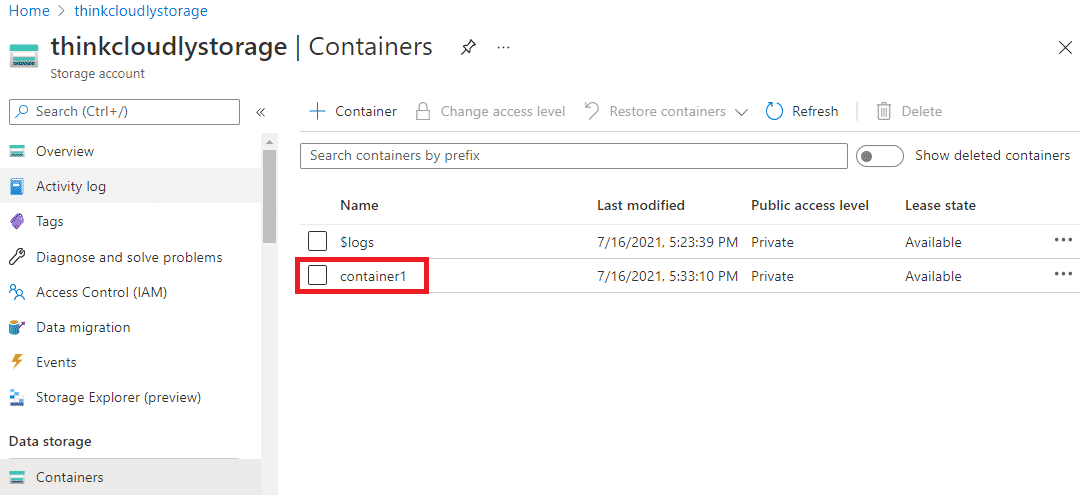In this article, we will be looking at Microsoft Azure blob storage. There are other options from Amazon s3, Google Cloud Storage, Rackspace Cloud Files, and others all offering slightly different capabilities that you should consider when deciding on your platform to use for storing data in the cloud.
Blob storage has stood out to me as something worth investigating further so I’m going to run through some of its features with you today. Blobs can store large files like images or videos but don’t support indexing them which makes it difficult if not impossible for applications to search within these blobs using keywords because there is no direct way for an application running outside of Azure to access the content without having a copy stored locally first. Let’s start with understanding what is Blob storage.
What is Blob Storage?
Blob storage is designed for storing unstructured data that can be accessed from anywhere in the world via HTTP or HTTPS. The blobs themselves are just chunks of binary data – files, images, etc – but within these files, we have additional information stored as key/value pairs which allow us to manage and configure our storage space more easily. We’ll look at some examples later on so don’t worry about understanding all the details at this stage, just think about what blob storage provides as are large-scale cloud-based object-store.
The blob service is structured around containers that contain zero or more named blobs, public containers will be listed when authenticated using your Azure account credentials while private ones are only accessible to your service. Containers can be shared with other Azure users and the public at large using a unique URL which you can share if you wish; authentication is standard HTTP Basic which makes use of your Azure account name and key, if authenticated we can download or upload files to our storage space.
Build Your Career as a
Azure Cloud Architect
- Live Projects
- Resume / Interview Preparation

Azure actually offers two flavors of blob storage: managed and unmanaged.
The managed flavor (Blob Storage) allows you to focus on building applications without thinking about how they integrate with the actual storage layer while the Unmanaged flavor (Page Blob Storage) was created for scenarios where performance and scalability are more important than design convenience. You may see references to Page Blobs when trying to trigger an event based on a file being uploaded but for the most part, we’ll be focusing on Blobs.
Blob Storage Categories
In addition to allowing storage of large binary objects in Azure, Blob is optimized for three different storage scenarios:
- Block Blobs: These are stored objects in what is known as blobs, such as images and log files. It is possible to store data in block blobs up to *5TB, which is equal to 50,000 blocks of 100MB each.
- Page blobs: They are designed for random file reads and writes with a maximum size of 8TB. Pages blobs can be stored both in standard and premium versions in Azure.
- Append Blobs: Append Blobs are ideal for use with append scenarios such as log storage. Each block can be up to 4MB in size and will be combined in different ways.
Benefits of Blob Storage:
- Cost-Effective: Hot cloud storage prices are around 0,018 USD per GB/month while Archive class pricing is one of the lowest in the industry at about 0,002 USD per GB/month.
- Different types of storage tiers: There are three storage types for needs, which will be hot (frequently used), cool( infrequent use), and archive (long-term).
- Secure: Azure Storage encrypts all the data written to an Azure storage account. The service provides you with fine-grained control over who has access to your data.
- Scalable: Azure Storage is designed to be scalable for the data storage and performance needs of today’s applications.
- Redundancy is one of the most important aspects when it comes to backup. We are able to replicate data in quite a few ways that we wouldn’t have been capable of on our own hardware, which gives us an extremely high level of redundancy!
Why Azure Blob Storage?
Azure’s blob storage makes dealing with unstructured data easy. It lets users store different types of information, such as logs and images, in one place without having to deploy a database system for each type of data. Blob storage also uses strong consistency that guarantees your files will be safe even if they are geo-replicated across regions for high availability.
Creating and setting up Azure Blob Storage is a straightforward process that can be accomplished in just a few steps. To begin, navigate to the Azure portal and log in to your account. Step one is to search for “Azure Blob Storage” in the Azure Marketplace, then select “Create” to initiate the setup process. In step two, you’ll define the necessary configurations, such as the storage account name, region, and performance tier. Step three involves configuring your desired data redundancy options and access tiers, ensuring you align your choices with your specific needs and budget, taking into consideration Azure Blob Pricing. Once you’ve completed these settings, proceed to step four and review your choices before clicking “Create” to deploy your Azure Blob Storage account. Finally, step five involves managing and accessing your storage resources, which includes uploading data, setting up security, and utilizing Azure Blob Storage’s versatile capabilities. In essence, Azure Blob Storage is a scalable, secure, and cost-effective solution for storing vast amounts of unstructured data, making it an essential component in modern cloud-based applications and data management strategies.
Azure Blob Storage pricing
With Blob Storage, you are charged separately for storage and data transfer. The price of these services varies depending on factors like region or availability zone in which they’re being used as well as volume discounts that may apply from time to time based upon your needs (e.g., 10GB instead of 150MB).
A number of factors influence the cost of service, including:
- Zones of storage availability and region
- Data storage volume (volume discounts sometimes apply)
- Tier of storage
- Level of redundancy
- Reserved storage
- for operational operations
- The volume of data transfer
Let’s create an Azure storage Storage account
- Login to Azure portal
- Go to the All services blade Select storage account and click on it to open the blade and click on +Create.
- Fill all details in the basic tab same as in Table 1:
| Setting | Value |
| Subscription | Default subscription |
| Resource group | Create a new resource group or select an existing Resource group |
| Storage account name | thinkcloudlystorage |
| Location | (US) Central US |
| Performance | Standard |
| Redundancy | Geo-redundant storage (GRS) |
Table 1
- After that click on review + create and then after validation completes click on create.
- You can check your new storage account by searching and opening the storage account.
Now let’s explore the container feature
- In thinkcloudlystorage click on the container under Data Storage and give the name and click on create.
- Open your favorite browser and search for any image and save it somewhere.
- Click on Container 1 that you recently created and click on upload file and upload the picture.
- After the file, I uploaded please click on the file and check the options available and explore the features.
Congratulations!! You have created a blob storage account you can also explore files, tables, and Queue options.
Conclusion:
Microsoft Azure blob storage is a reliable, secure service that provides you with the ability to store your data in the cloud. These are just some of the reasons why it’s an appealing option for businesses looking to cut costs and increase productivity. If you’re considering using this type of storage or want to learn Azure Cloud computing check out Thinkcloudly courses and blogs.















